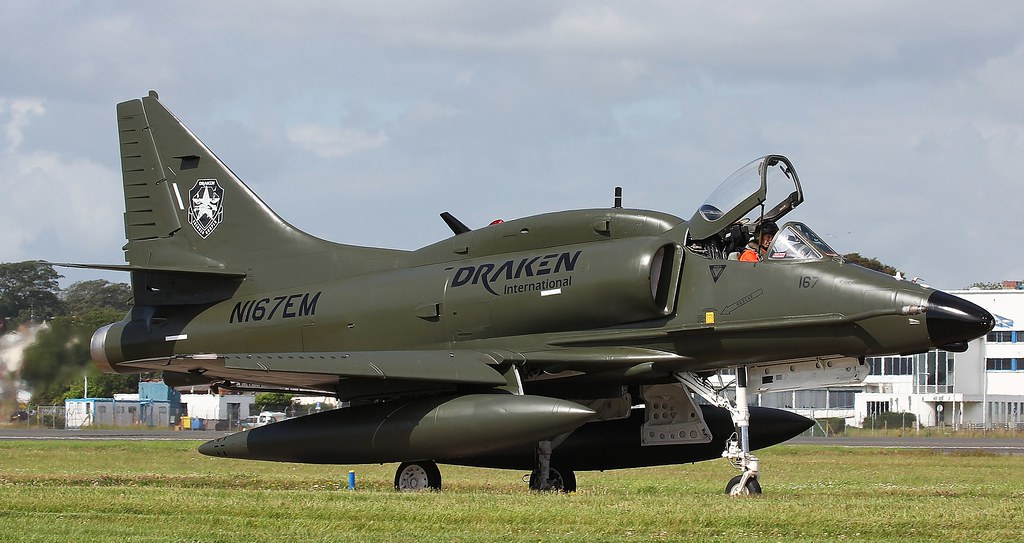Good share Sir. Just one question. Why is that only PAF and may be USAF to some extent uses the numbering system which shows the year of manufacturing on the bottom of vertical fin while cannot find any such marking on majority other Air Forces' aircraft.
Am Air Force so I cannot speak for the other branches.
http://www.f-16.net/g3/var/resizes/f-16-photos/album38/album65/adl.jpg?m=1371898516
The reason we incorporate the 'year of manufacturing' is because we manufacture a lot of jets. Most we keep but many we sold. So for the A model above, 1978 is the year of manufacture and 063 is the tail number. Now, the tail number is not the same as the manufacturer's
SERIAL number. That is a completely different tracking device.
In theory, the tail number indicate the jet's sequential location in a chain of jets. If an F-16 is reassigned, the ideal thing is to keep the entire tail number sequence, but that is not always possible, especially if the jet is reassigned to a foreign air force. That foreign air force may say: 'We are buying 50 jets, so we are going to number them 1 to 50.' There is nothing we can do about that. But the jet's serial number will and must remain the same because when the jet is sent back to the maker for depot overhaul, there must be a stable relationship between jet and its records. We do not want to perform Block X modifications on an older airframe that have different wirings and hardware that have nothing to do with Block X features and capabilities.
So if an air force that flies the F-16 but know that it will have only 50 F-16s, it would make better sense for that air force to renumber that tail number convention. Tail number 78063 under USAF might become simply 001 or 050 for that foreign air force.
Our tail numbering system is an effing mess simply because we manufacture a lot of airplanes across all types of mission platforms. The PAF's adoption of our ways may be easier for the PAF, but if the PAF grows and not necessarily the same path as ours, you guys may want to revisit how you want to keep tracks of your jets.
Surprised to see private companies taking part in Red Flag
I do not like it one single bit.
We cut our Aggressors program due to budget cuts. How many of those private 'contractors' pilots are former military ? I do not know but am sure many of them are. Still, they are limited in how much they can provide in terms of simulating an adversary. Most likely, they will not have the latest technical intelligence on advances by potential adversaries while we do but for security reasons we cannot provide lest we reveal how we came to those technical intelligence.
A base would have a 'top 10 percent' of all of its pilots. Many times, the differences between pilots in terms of skills are only a few points. In this situation, a commander is very hard pressed to select who to put into that 'top 10' category to send to advanced schools and training, such as Weapons School and Red Flag. An excellent pilot may not be in that 'top 10' group simply because he got sick one day and missed a sortie that would have put him over.
So across the entire USAF, we have an elite cadre of combat pilots, from bombers to fighters to even refuelers. Yes, there are refueler command pilots who knows their missions and have better skills than peers.
Going back to the Aggressors. These pilots are 1% of that 10% of elite fighter pilots. The Weapons Schools instructors are the same. The US Navy did not cut their Top Gun pilots but reorganized under a new training program. Aggressors pilots are different from Weapons School instructors in that Aggressors are dedicated to studying the relationships between fighters and combat doctrines of different air forces. Weapons School instructors are focused on how to maximize a pilot's skills to his aircraft, whether it is a fighter or bomber or cargo in relation to other platforms, in other words, how to work together to defeat an enemy. The Aggressors and Weapons School programs work together to give the USAF a comprehensive combat training as close to real combat as possible.
These contractors or mercenaries will not be able to provide that training. Temporarily at Red Flag, maybe. But the Aggressors program is long term and dedicated.













